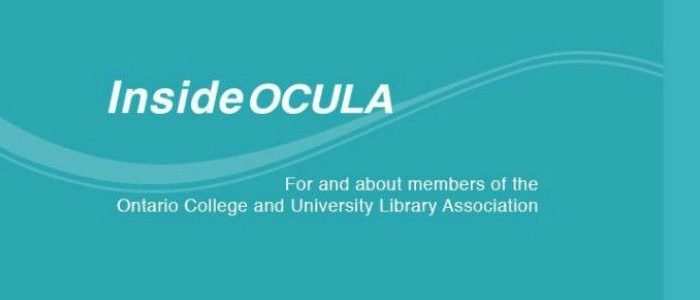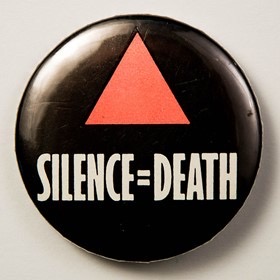
Threshold Concepts and Information Literacy
You can’t rebalance the boat without rocking it.”
Ray Land, Jan H. F. Meyer and Jan Smith in Threshold Concepts within the Disciplines
In June 2014, the Association for College and Research Libraries (ACRL) released a second draft version of the Framework for Information Literacy for Higher Education that included five threshold concepts:
Scholarship is a conversation
Research as inquiry
Authority is constructed and contextual
Format as a process, searching as exploration
Information has value
The framework was created in response to the changing technological and educational landscape. In addition, Townsend, Brunetti and Hofer (2011) discuss the issue of “overload problem” with the ACRL standards. This article provides a basic background on threshold concepts and connects it to the Framework. Due to brevity, the article will focus on the use of Scholarship is a conversation as an example.
Understanding threshold concepts and information literacy
In May 2003, Meyer and Land released a report in the U.K. through the Enhancing Teaching-Learning Environments in Undergraduate Courses Project. Through their research with economics scholars, they developed characteristics of a threshold concept, which they identify as (2012):
Transformative: Students experience a shift in their perspective, which leads to changes in attitude or beliefs. For example, a student who has learned that Scholarship is a conversation will recognize that information published articles and books originate from other sources, which also come from other sources and so forth. The student understands that a larger “conversation” exists between scholars on a topic and searches for more articles in other journals or databases and makes connections.
Irreversible: Once the concept has been learned, it becomes so engrained in the students’ thinking that they cannot unlearn it. A student who has learned that Scholarship is a conversation can see connections in an article to other literature in all their course readings and research.
Integrative: A threshold concept connects with other concepts in the discipline. For example, that same student may come to recognize that in order for scholarship to continue as a conversation, scholars must approach research as an iterative process (Research as inquiry).
Bounded: It is possible that a threshold concept falls well within one discipline as well as causing conflict when applied in another discipline. While this can happen in some disciplines, information literacy is meant to be integrated in different disciplines.
Troublesome: There is potential for the student to encounter barriers when learning the concept. For some students, this can be traced back to forms of troublesome knowledge: ritual, inert, alien, conceptually difficult, tacit and troublesome language (Perkins, 2012). For example, for an annotated bibliography assignment, upper-year students may search for readings on the same topic based on previous experiences with completing an annotated bibliography (ritual knowledge). In order to turn ritual knowledge into active knowledge, the student should recognize the significance and connections between the selected readings in the annotated bibliography.
Learning threshold concepts
Overall, threshold concepts are meant to be taught over a long period of time. Once students learn these concepts, they become a part of their everyday thinking and practice. The methods presented in the literature on threshold concepts typically suggest engaging students in active learning. The second draft of the Framework presents a variety of knowledge practices to help develop understanding and skills for each threshold concept. In addition, Davies and Mangan (2008) suggest “three types of activity: reflective exercises, problem-focused exercises and threshold network exercises” for learning threshold concepts.
Threshold network exercises: These exercises encourage students to apply different concepts to a problem with the intention of integrating concepts in the discipline. For example, present students with a research article for the class and ask students to discuss how the six concepts connect to the one article. Students should be able to identify characteristics each concept in their discussion and make connections between Scholarship is a conversation, Research as inquiry, Authority is constructed and contextual, Format as a process, Search as exploration and Information has value.
Problem-focused exercises: This form of exercise is explained by Davies and Mangan (2008) encourages students to identify different perspectives with the problem. For example, students can read an article on an issue in scholarly communication accompanied by a series of questions that prompt the students to think the concept through a case or problem.
Reflective exercises: Reflective exercises engage students in the concept by “posing an applied question in [the discipline].” The question posed should apply to the students so that they draw answers that connect to their everyday practices (Davies and Mangan, 2008). To further the exercise, students should also compare and contrast answers from different perspectives. For example, for Scholarship is a conversation, one could ask: How are you responding to scholars in your research paper? As a comparison, one could follow up with: How would a researcher describe the process of developing and disseminating their research to the community? It is important to discuss the answer and present multiple answers or perspectives.
References
Davies, P. & Mangan, J. (2008). Embedding threshold concepts: From theory to pedagogical principles of learning activities. In R. Land, J. H. F. Meyer, & J. Smith (Eds.), Threshold concepts within the disciplines (pp. 37-50). Rotterdam, The Netherlands: Sense Publishers.
Meyer, J. H. F. & Land, R. (2012). Threshold concepts and troublesome knowledge: An introduction. In. J. H. F. Meyer & R. Land (Eds.), Overcoming barriers to student understanding: Threshold concepts and troublesome knowledge (pp. 3-18). New York, NY: Routledge.
Perkins, D. (2012). Constructivism and troublesome knowledge. In. J. H. F. Meyer & R. Land (Eds.), Overcoming barriers to student understanding: Threshold concepts and troublesome knowledge (pp. 33-47). New York, NY: Routledge.
Townsend, L., Brunetti, K., & Hofer, A. R. (2011). Threshold concepts and information literacy. portal: Libraries and the Academy, 11(3), 853-869.
Silvia Vong is the Collaborative Learning Librarian for the John M. Kelly Library at St. Michael’s College in the University of Toronto. She has a Master’s degree in Library and Information Science from the University of Western Ontario and a Master’s degree in Education from York University.



